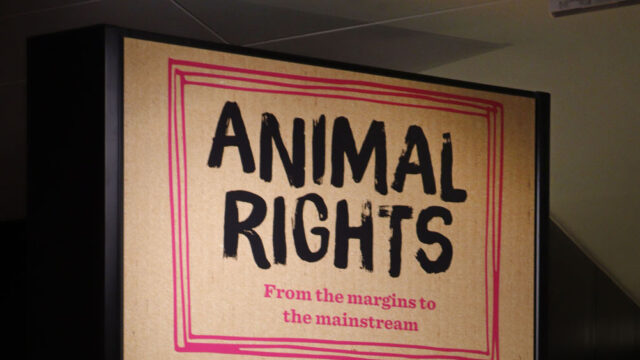Animal Rights at The British Library

People reading and photographing the Animal Rights exhibit at The British Library. Photo: Paul Knight
Fifty years ago, I was a student working the summer in a chicken slaughterhouse. Three years later, I was a vegan working for Compassion In World Farming and its campaigns against imprisoning egg-laying chickens in cages and confining pigs in stalls too narrow for them to turn around. If anyone had told me then that in five decades, his life’s work for animal rights is to be recognised by a national institution with an international reputation, I would have laughed in their face. But I am standing in front of an exhibit, Animal Rights: From the Margins to the Mainstream, in The British Library’s Treasures Gallery.
The Treasures Gallery displays some of the Library’s most precious and important books and manuscripts from its growing collection of almost 200 million items. It is a mix of permanent exhibits and temporary displays, which include the Magna Carta (1215), William Shakespeare’s First Folio (1623), and the first published account of enslavement by a woman, The History of Mary Prince (1831). The current temporary display in the Treasures Gallery is the animal rights exhibit that closes on 9 July (free admission).

The accompanying information is headed ‘Grassroots activism 1979-1989’ and explains, ‘In the 1970s a new animal rights politics reenergised the animal rights movement.’ From the Kim Stallwood Archive.
Animal Rights: From the Margins to the Mainstream tracks the progress of animal rights from the enlightenment until the present. The items range from Hogarth’s Four Stages of Cruelty (1768) to the Beast magazine (1981). The former is from the Library’s collection. The latter is from the Kim Stallwood Archive. Additional items on display include:
- A letter from Richard Martin MP (17 November 1826)
- Henry S. Salt,Animals’ Rights Considered in Relation to Social Progress (1892)
- Edward Carpenter, Vivisection: an address given before the Humanitarian League in London (1904)
- Letter from Lizzy Lind-af-Hageby to George Bernard Shaw (1913)
- Circulars from the University of London Animal Welfare Society (1931)
- Peter Singer, ‘Animal Liberation’ inThe New York Review, 20, no.5. New York (1973)
- Leaflets from the Vegan Society (1980s)
The British Parliament passing the ‘Act to Prevent the Cruel and Improper Treatment of Cattle’ in 1822 is widely recognised as the first animal welfare legislation adopted by a modern representative body. The Martin’s Act bicentenary last year and my fiftieth anniversary this year of working in a chicken slaughterhouse suggest progress for animal rights is happening. Of course, this progress is not fast enough. Billions of animals continue to suffer and die. But progress, nonetheless, is taking place and quicker if we compare events over the last fifty years with the last two hundred years.

Letter from Lizzy Lind-af-Hageby to George Bernard Show about the Brown Dog Affair written in 1913 and he donated in 1961.
Standing in front of the four glass cabinets that hold the published, handwritten and ephemeral works from the Library’scollection and looking at several items from the Kim Stallwood Archive, I am overwhelmed with the feeling that this is evidence that society is beginning to recognise animal rights as a legitimate moral, cultural, and political issue. But how many years are needed to achieve animal rights is anyone’s guess.
The past, present, and future of animal rights are the focus of a public meeting hosted by The British Library on Tuesday, 16 May. Prior booking is required to attend ‘The Fight for Animal Rights: Kim Stallwood in Conversation’ in person at the Library’s Pigott Theatre or watch the simultaneous live stream.











